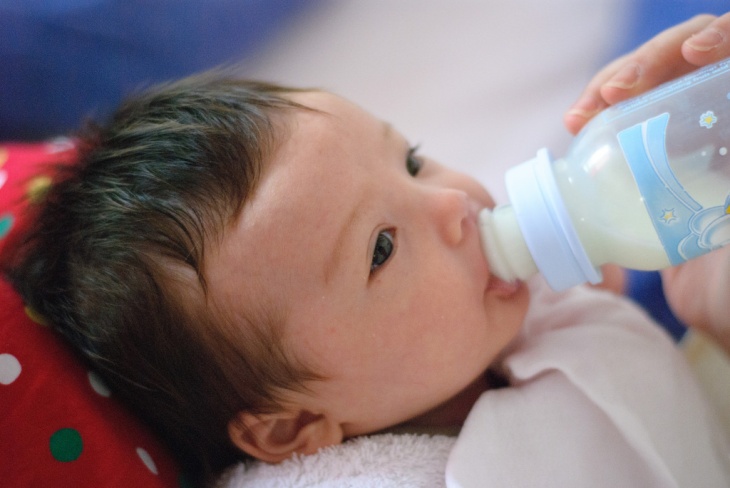

Wow, now that is a new headline that would scare the bejeebers out of you if you were currently using baby formula.
The Sydney Morninig Herald goes on to say:
A world-leading team in nanotechnology at Arizona State University tested seven off-the-shelf baby formula products and found two – Nestle’s NAN HA 1 Gold and Nature’s Way Kids Smart 1 – contained needle-shaped hydroxyapatite nanoparticles.
Hydroxyapatite nanoparticles – those sound scary right?

Hydroxyapatite – the main mineral found in bone (source)
Well, lets start with the long word – hydroxyapatite. This is a naturally forming mineral made from calcium and phosphates. It is the main material that your bones and teeth are made from and exists in a colloidal form in milk.
When you dry milk to make baby formula, the water is removed and the milk is concentrated down into small particles also known as a powder.
Now let’s move on to the word – nanoparticles. These are tiny particles with at least one dimension less than 100 nanometres or around 1000 times thinner than the width of your hair.
Your silver jewelry will be giving off silver nanoparticles right now, and your sunscreen will be using them to protect you from UV rays. They are in our food, our electronics, even our stained glass windows!
So the headline really should read:

However that sort of title is not going to sell newspapers.
Still worried? Lets dig deeper into the research.
The study was commissioned and published by Friends of the Earth which is an environmental advocacy group. In it they analysed six off-the-shelf baby formulas bought in America, five of which were powders and one was a liquid concentrate.
They dissolved the baby formula in water, spun it around to pull out the particles and put them into a Transmission Electron Microscope to see what the tiny particles looked like.
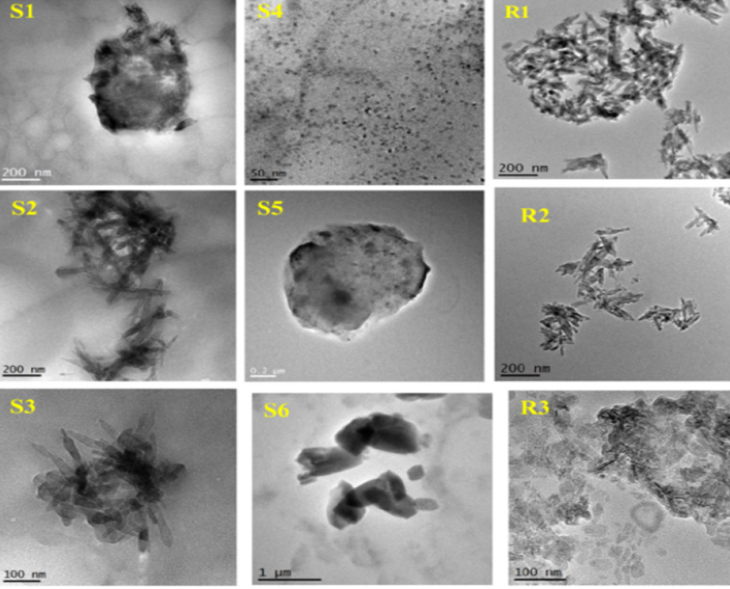
TEM image of nanoparticles found in baby formula (source)
What they found were all sorts of shapes and sizes of particles which contained calcium, phosphorous and oxygen. These are also the same elements that make up bones and teeth.
When it comes to particles, the shape and size can make a difference between safe and unsafe, as some particles if small enough could move into our bloodstream through the wall of our gut after we eat them.
This doesn’t necessarily mean that they are harmful, every single day we are all inhaling, and eating nanoparticles that are just around us in our environment.
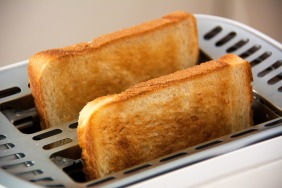 For example; if you had a piece of toast for breakfast, you would likely have eaten carbon nanoparticles, which to the human eye look like the burned bits on the top. I don’t see any headlines scaring people about nano dangers in toast so where did the “potentially toxic” part of this headline come from?
For example; if you had a piece of toast for breakfast, you would likely have eaten carbon nanoparticles, which to the human eye look like the burned bits on the top. I don’t see any headlines scaring people about nano dangers in toast so where did the “potentially toxic” part of this headline come from?
Well, in 2016 the European Commission published a consumer safety study that looked at nano hydroxyapatite.
Their summary was that “nano-hydroxyapatite in needle shaped form is of concern in relation to potential toxicity in cosmetic products”.
They based this on research which they admitted was not in line with the SCCS Memorandum on Relevance, Adequacy and Quality of Data in Safety Dossiers on Nanomaterials. None of the studies they looked at actually exposed any people to the substance. The few studies that were carried out used rats, and the study that caused the most concern injected 50 mg/kg body-weight of needle shaped nano-hydroxyapatite into the tail veins of 6 male Sprague Dawley rats. Just for context the lethal dose of nano-hydroxyapatite is 200 mg/kg body-weight, so their bloodstreams were filled with some pretty high doses of nano needles. After 48 hours, they analysed the livers of the rats and found some inflammatory cell infiltration and increased white blood cell levels in the rats. This study, where rats are injected with medium to high doses of nano hydroxyapatite directly into their bloodstream and is how the particles became labelled “potentially toxic”. The report clearly shows the other studies where rats that were rubbed with or injected with needle shaped nano hydroxyapatite particles showed little to no reaction.
It’s important to remember when reading this that its not just how much of a material we’re exposed to that is important, but also the pathway to exposure can make a difference.
So what happens to these needle shaped nano hydroxyapatite crystals when your baby ingests them?
Well the friends of the earth study exposed them to different gastric fluid solutions and found that they rapidly and almost instantaneously dissolved.
Basically this scientific test implies that when your baby drinks the formula, the nanoparticles dissolve in their stomach ready for the calcium and phosphate be absorbed by the body.
The skeptics among you may still be concerned that hydroxyapatite nanoparticles are in baby food, but let me just note that research has shown that we form calcium phosphate nanoparticles naturally in our stomachs to help increase the our intestinal immune system.
For those nano-phobes still among us, it might be worth sharing this image:
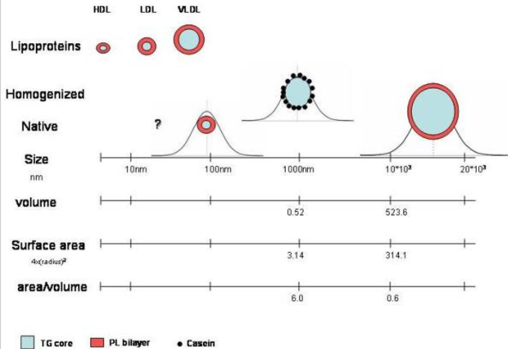
Image showing natural breast milk contains nano particles (source)
which shows that normal human breast milk is naturally composed of nano particles of milk fat casein-protein globules – see not all nanoparticles are scary or dangerous.
So in conclusion, scientific jargon has been used to scare parents using evidence from a scientific paper which has findings of no special significance.
Based on current research, the hydroxyapatite nanoparticles found in baby formula are most likely safe, are in small doses, in a form that your baby can easily digest and could even be beneficial for your baby in the long run.
UPDATE 3rd July 2017
Since writing this blog, Friends of the Earth have contacted me on twitter to offer me a copy of the report that they are making their Australian baby formula claims from.
Firstly the report is not peer reviewed and so can not be treated with the same scientific rigour that the article I refer to in this article can.
Secondly, the report shows that the samples which were bought in Australia, were opened in Australia (I’m assuming not in a clean room) and then transferred to a ziploc bag and mailed to the labs for testing in the US.
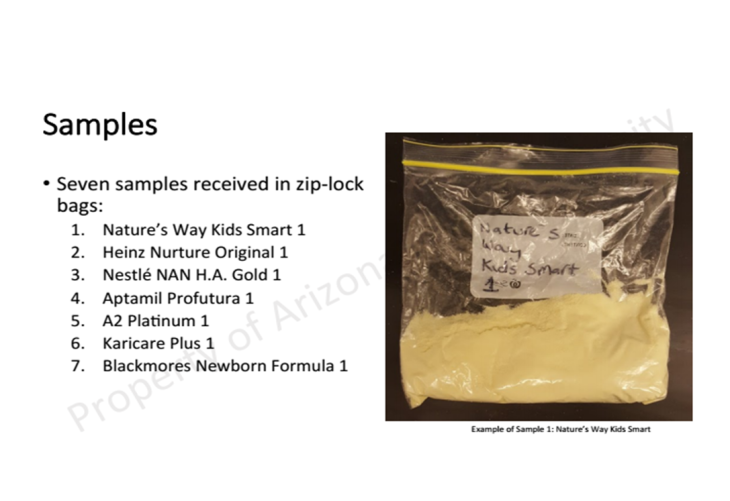
Example page from the Friends of the Earth report showing how samples had been opened prior to testing and placed in a non-sterilised ziploc bag for transport.
Proper scientific methods include removing all possible sources of contamination when using high resolution equipment such as TEM and XRD and thus the photo from this report shows evidence that all of the samples tested by Friends of the Earth could potentially have been contaminated through poor sample handling and packaging.
Friends of the Earth also felt it appropriate to tag my employer in a twitter post I can assume with the only purpose of trying to get me in trouble and jepordise my career.
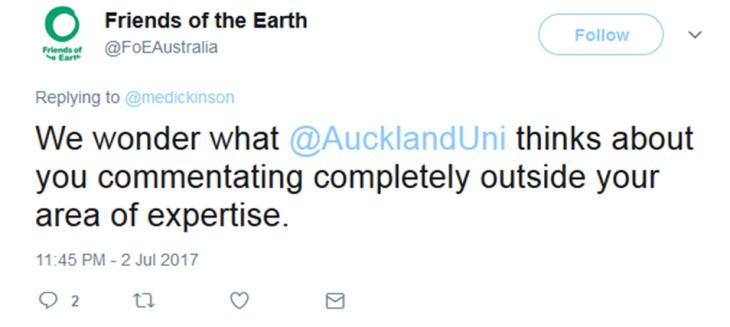
In order to clear this up, my blog has always stated in the “about me” section that my writings here are purely my opinion and not the views held by my employer. However, I do feel that I should include that my research for the last 15 years has been in nanoparticles and nanotechnology and my whole career started in nano hydroxyapatite systems and I spent 6 years using hydroxyapatite in a nanostructured form to try and help remineralise teeth for cavity repair and protection. I also have several years of hands on experience with the techniques mentioned in the report including SEM, TEM, XPS and XRD and have taught undergraduate and postgraduate courses explaining the principles of these techniques.
I will admit that I have very little experience with baby formula other than making it up for to help friends of mine who are parents.